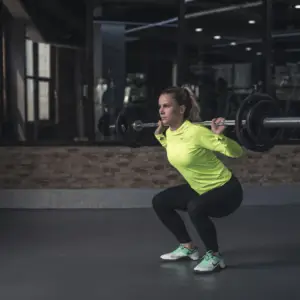Have you ever wondered how professional athletes maintain their performance and endurance during intense workouts? The secret often lies in something as simple and fundamental as breathing. Effective breathing techniques can significantly enhance your exercise performance, boost your stamina, and help you get the best out of every workout. Join me as we explore the power of breath and how you can harness it to elevate your fitness game.
Why Breathing Matters
Breathing is more than just a basic bodily function; it’s a crucial component of physical performance. Proper breathing ensures that your muscles receive the oxygen they need to function efficiently, reducing fatigue and improving endurance. When you breathe correctly, you can enhance your overall exercise performance, maintain your stamina, and even speed up recovery times.
Research has shown that controlled breathing can have numerous benefits, including improved cardiovascular function, increased lung capacity, and better stress management (Dempsey et al., 2020). By mastering specific breathing techniques, you can make your workouts more effective and enjoyable.
Diaphragmatic Breathing: The Foundation
Diaphragmatic breathing, also known as belly breathing, is the foundation of effective breathing techniques. This method focuses on engaging the diaphragm, a large muscle located at the base of your lungs, to maximize oxygen intake. Here’s how to practice diaphragmatic breathing:
- Lie down or sit comfortably: Place one hand on your chest and the other on your abdomen.
- Inhale deeply through your nose: Allow your abdomen to rise while keeping your chest relatively still.
- Exhale slowly through your mouth: Let your abdomen fall naturally.
By practicing diaphragmatic breathing regularly, you can increase your lung capacity and ensure a more efficient oxygen supply to your muscles during exercise (Jones, 2019). If you would get deeper into diaphragmatic breathing check out our blog post, here !
Rhythmic Breathing: Syncing Breath with Movement
Rhythmic breathing involves synchronizing your breath with your movements. This technique is particularly useful for running and other aerobic exercises. By establishing a consistent breathing pattern, you can maintain a steady pace and reduce the risk of side stitches and muscle fatigue.
For running, a common rhythmic breathing pattern is the 2:2 ratio, where you inhale for two steps and exhale for two steps. This pattern helps ensure that your body receives a constant supply of oxygen, keeping your muscles well-fueled throughout your run. Adjusting this ratio to a 3:2 pattern (inhale for three steps, exhale for two) can help distribute the impact on your body more evenly. This technique reduces stress on the diaphragm and minimizes the chance of side stitches, which can disrupt your rhythm and overall performance (McCann & Collett, 2015).
Implementing rhythmic breathing might feel awkward at first, especially if you’re accustomed to breathing irregularly during exercise. However, with consistent practice, it becomes second nature. Start by walking and counting your steps as you breathe in and out, then gradually increase your pace to a jog and eventually to a run. Over time, you’ll find that rhythmic breathing not only enhances your stamina but also makes your runs more enjoyable and less taxing on your body.
Additionally, integrating rhythmic breathing into your routine can improve your mental focus. By concentrating on your breathing patterns, you can achieve a meditative state, helping to block out distractions and maintain a steady rhythm throughout your workout. This mental clarity can be particularly beneficial during long-distance runs or challenging training sessions, where maintaining focus is crucial to performance.
Discover Our Personalized Fitness Plans!
Are you ready to take your fitness journey to the next level? Our personalized fitness plans are designed to fit your unique needs and help you achieve your health and wellness goals. Learn more and get started today, here!
Box Breathing: Enhancing Focus and Calm
Box breathing, also known as four-square breathing, is a technique used to enhance focus and calm the mind. This method involves inhaling, holding, exhaling, and holding your breath again, each for a count of four. Box breathing can be especially useful during high-intensity workouts or when you need to manage stress and maintain concentration.
Here’s how to practice box breathing:
- Inhale for a count of four.
- Hold your breath for a count of four.
- Exhale for a count of four.
- Hold your breath again for a count of four.
Repeat this cycle for several minutes to achieve a state of relaxation and focus, which can enhance your exercise performance (Clark, 2017).
Box breathing is not only beneficial for workouts but also a great technique to use in everyday life to manage stress and anxiety. Whether you’re preparing for a challenging workout, a big presentation, or just need a moment to collect your thoughts, box breathing can help center your mind and body.
Nasal Breathing: Optimizing Oxygen Utilization
Nasal breathing, or breathing exclusively through your nose, can help optimize oxygen utilization and improve your overall efficiency during exercise. This technique promotes the production of nitric oxide, a molecule that enhances blood flow and oxygen delivery to your muscles (Lundberg & Weitzberg, 2013).
To practice nasal breathing, simply close your mouth and focus on inhaling and exhaling through your nose. It may feel challenging at first, especially during high-intensity workouts, but with practice, you’ll find that nasal breathing can significantly improve your stamina and performance.
Nasal breathing also helps filter and warm the air before it enters your lungs, which can be beneficial for people who are sensitive to cold air or pollutants. Additionally, it encourages a slower, deeper breathing pattern that can enhance your body’s ability to use oxygen more efficiently, ultimately improving endurance and reducing the likelihood of fatigue.
Breathing Techniques for Different Exercises
Different exercises benefit from specific breathing techniques. Here’s a quick guide to effective breathing methods for various workouts:
- Running: Use rhythmic breathing (2:2 or 3:2 pattern) to maintain a steady pace and reduce fatigue.
- Weightlifting: Practice exhaling during the exertion phase (e.g., lifting the weight) and inhaling during the relaxation phase (e.g., lowering the weight) to ensure proper oxygen flow and core stability.
- Yoga: Focus on deep, diaphragmatic breathing to enhance relaxation and flexibility. Techniques like Ujjayi breathing can help maintain a steady rhythm and calm the mind.
- Swimming: Use bilateral breathing, which involves breathing on both sides, to maintain balance and oxygen intake.
5 Essential Running Tips I Wish I Knew Earlier
Ready to enhance your running experience? Check out our blog post on the 5 essential running tips that can make a huge difference in your routine. Don’t miss out on these game-changing insights, here!
Incorporating Breathing Techniques into Your Routine
To get the best out of your workouts, start by incorporating these breathing techniques into your regular exercise routine. Here are some tips to help you get started:
- Practice regularly: Set aside time each day to practice diaphragmatic and rhythmic breathing. This will help you become more comfortable with these techniques and integrate them into your workouts.
- Focus on form: Pay attention to your posture and ensure you’re engaging the right muscles when breathing. Good form can enhance the effectiveness of your breathing techniques.
- Stay consistent: Like any other aspect of fitness, consistency is key. Regular practice will help you develop better breathing habits and improve your overall performance.
Implementing Breathing Techniques into Daily Life
Integrating breathing techniques into your daily routine can help you maintain focus, reduce stress, and improve overall well-being. Here are some practical ways to incorporate these techniques into your everyday activities:
- Morning routine: Start your day with a few minutes of diaphragmatic breathing to energize your body and mind. This can set a positive tone for the day and improve your mental clarity.
- Work breaks: Use box breathing during short breaks at work to relieve stress and regain focus. This can enhance your productivity and reduce the negative effects of prolonged sitting.
- Evening relaxation: Practice nasal breathing before bed to calm your mind and prepare your body for a restful night’s sleep. This can improve your sleep quality and overall recovery.
By incorporating these simple practices into your daily life, you can experience the benefits of effective breathing techniques beyond your workouts, enhancing your overall health and well-being
Frequently Asked Questions
Q: How can I tell if I’m breathing correctly during exercise?
A: A good indication of proper breathing is if your abdomen rises and falls with each breath, indicating diaphragmatic breathing. Additionally, you should feel a steady, controlled rhythm rather than short, shallow breaths.
Q: Can breathing techniques help with recovery?
A: Yes, proper breathing can aid in recovery by reducing stress and promoting relaxation. Techniques like box breathing can help lower your heart rate and encourage a state of calm post-exercise.
Q: How long does it take to see benefits from breathing techniques?
A: While some benefits, like improved focus and relaxation, can be felt immediately, it may take a few weeks of regular practice to notice significant improvements in your performance and endurance.
Q: Is it normal to feel lightheaded when practicing new breathing techniques?
A: It’s not uncommon to feel lightheaded when first trying new breathing techniques. If this occurs, take a break and breathe normally. Gradually increase the duration and intensity of your practice as you become more comfortable.
Conclusion
Breathing is a powerful tool that can significantly enhance your exercise performance and overall well-being. By incorporating techniques like diaphragmatic breathing, rhythmic breathing, box breathing, and nasal breathing into your routine, you can unlock new levels of stamina, focus, and relaxation. Remember, the key to success is consistent practice and mindful application of these techniques.
We hope you found these insights into breathing techniques beneficial and that they inspire you to give them a try. For more health and wellness content, be sure to follow us on Instagram and check out our blog posts and shop for products that support your wellness journey. Like this post and visit our website for more tips and inspiration. Happy exercising! 💪✨

Sources
- Dempsey, J. A., et al. (2020). “Exercise-induced respiratory muscle work: Effects on blood flow, fatigue, and performance.” Journal of Applied Physiology, 128(1), 104-115. Read the full article.
- Jones, A. (2019). “The effects of diaphragmatic breathing on attention, negative affect, and stress in healthy adults.” Frontiers in Psychology, 10, 720. Read the full article.
- McCann, B., & Collett, J. (2015). “Breathing techniques for endurance athletes.” Sports Medicine, 45(1)






